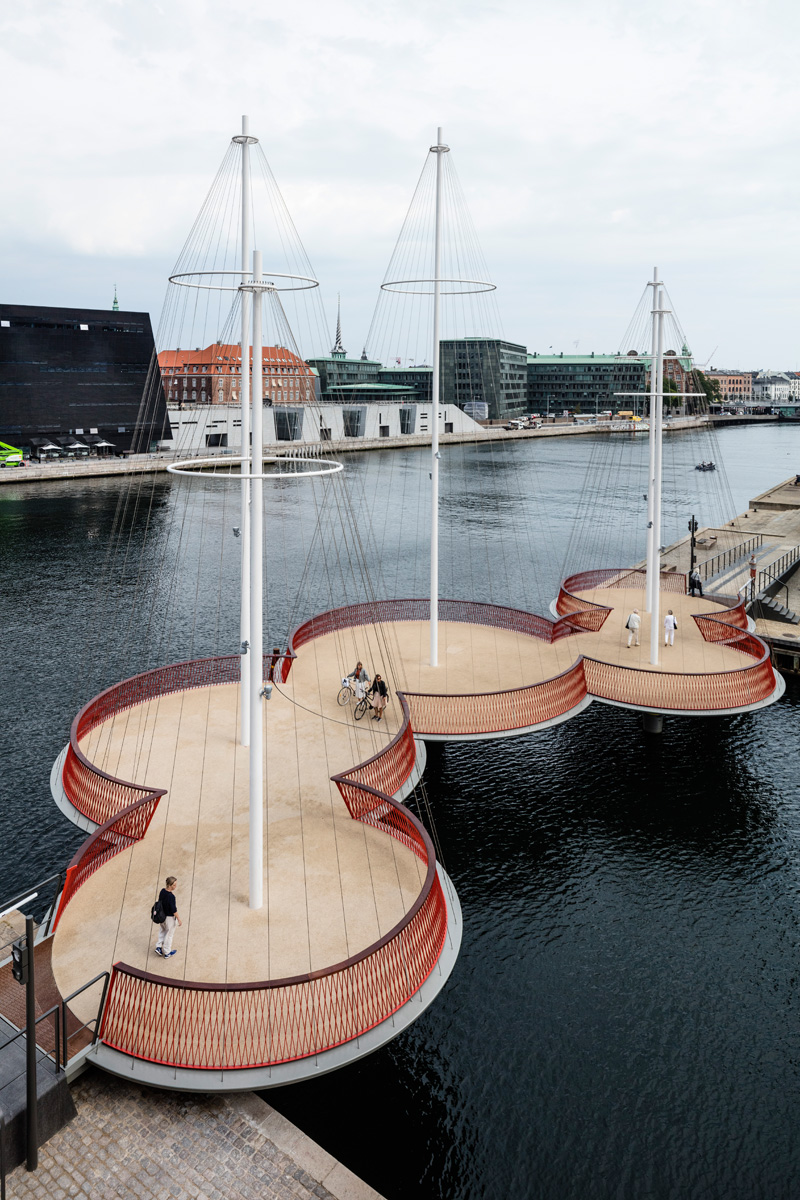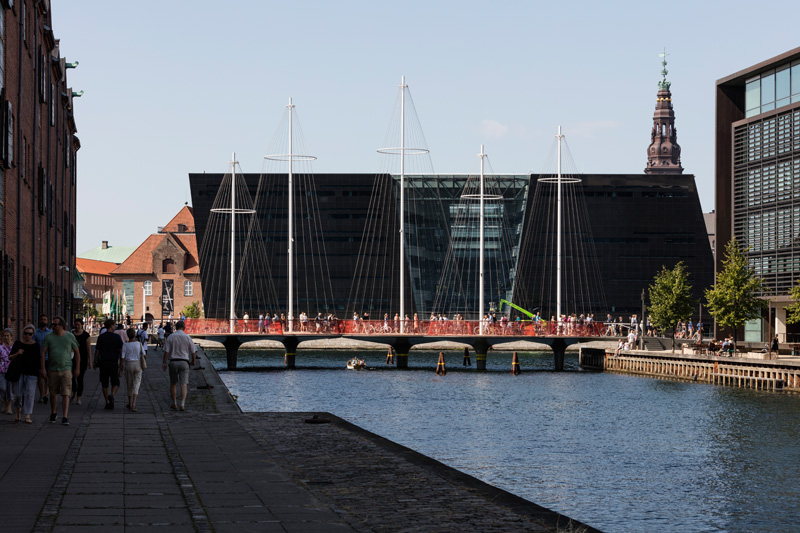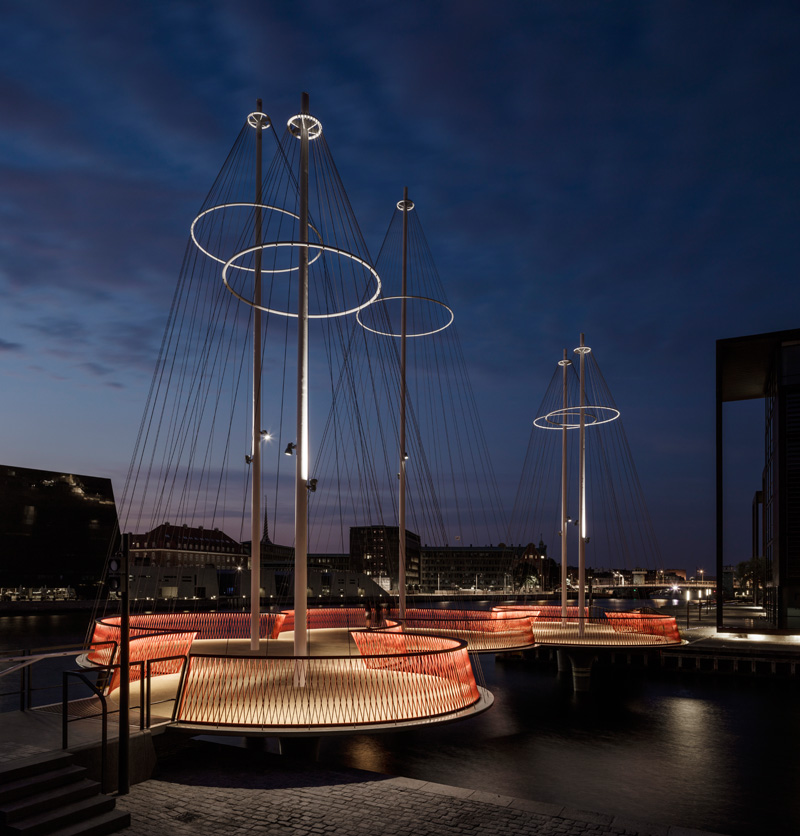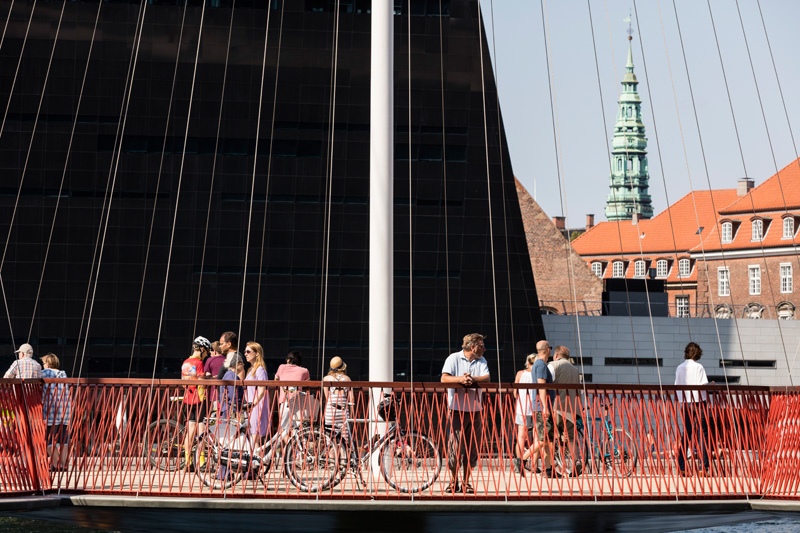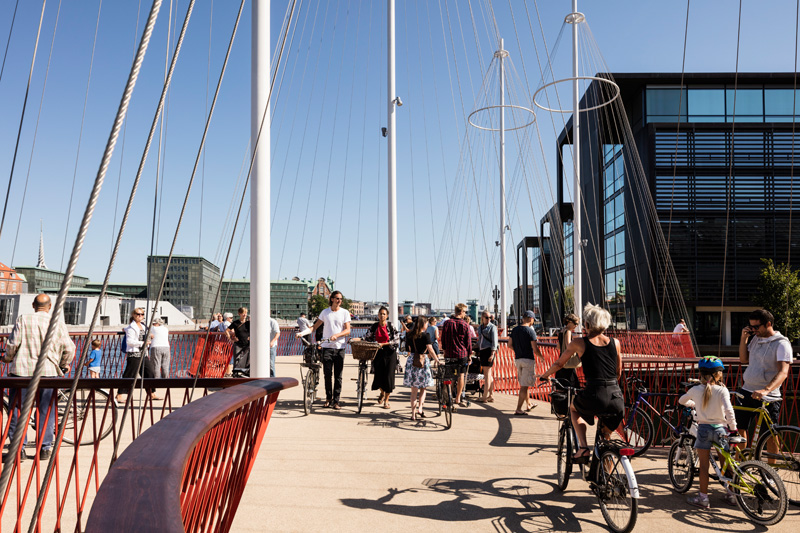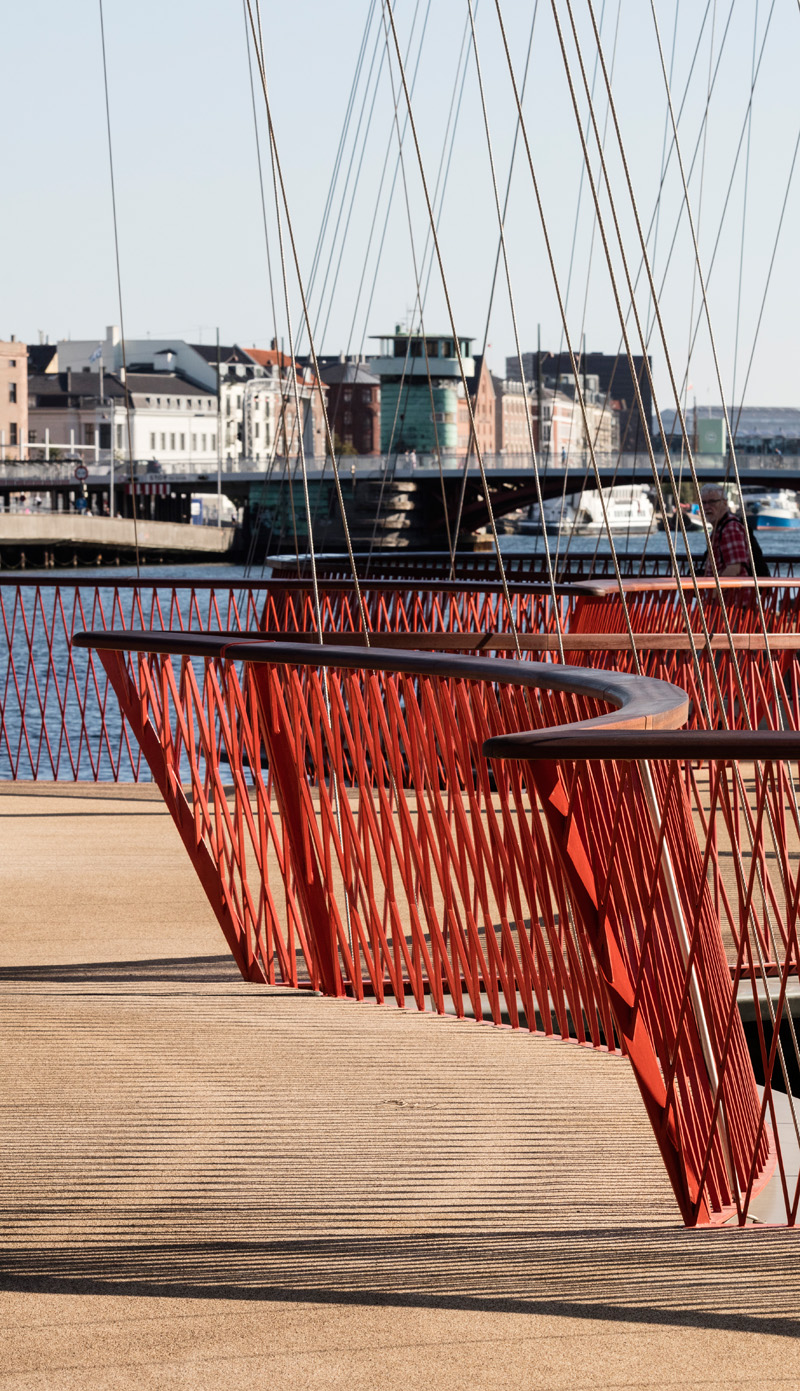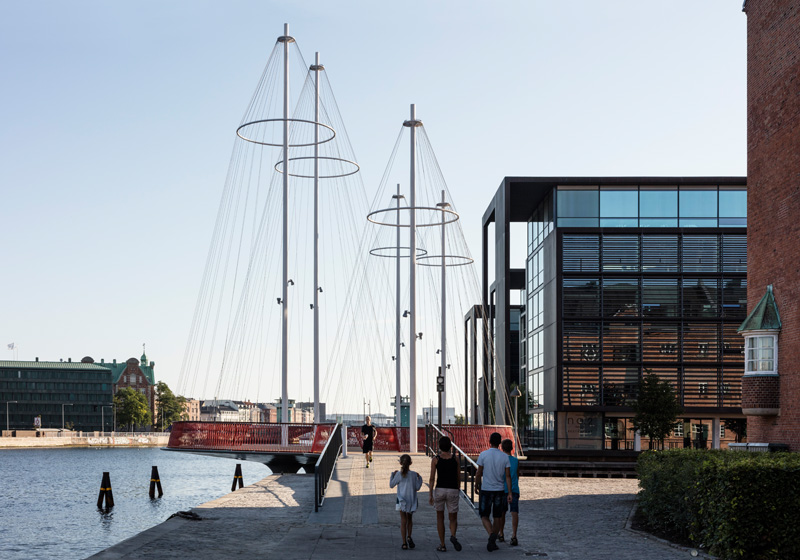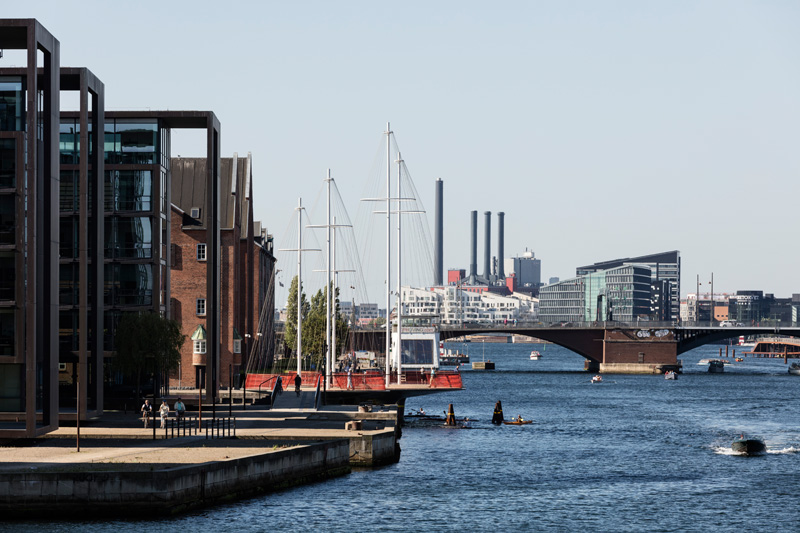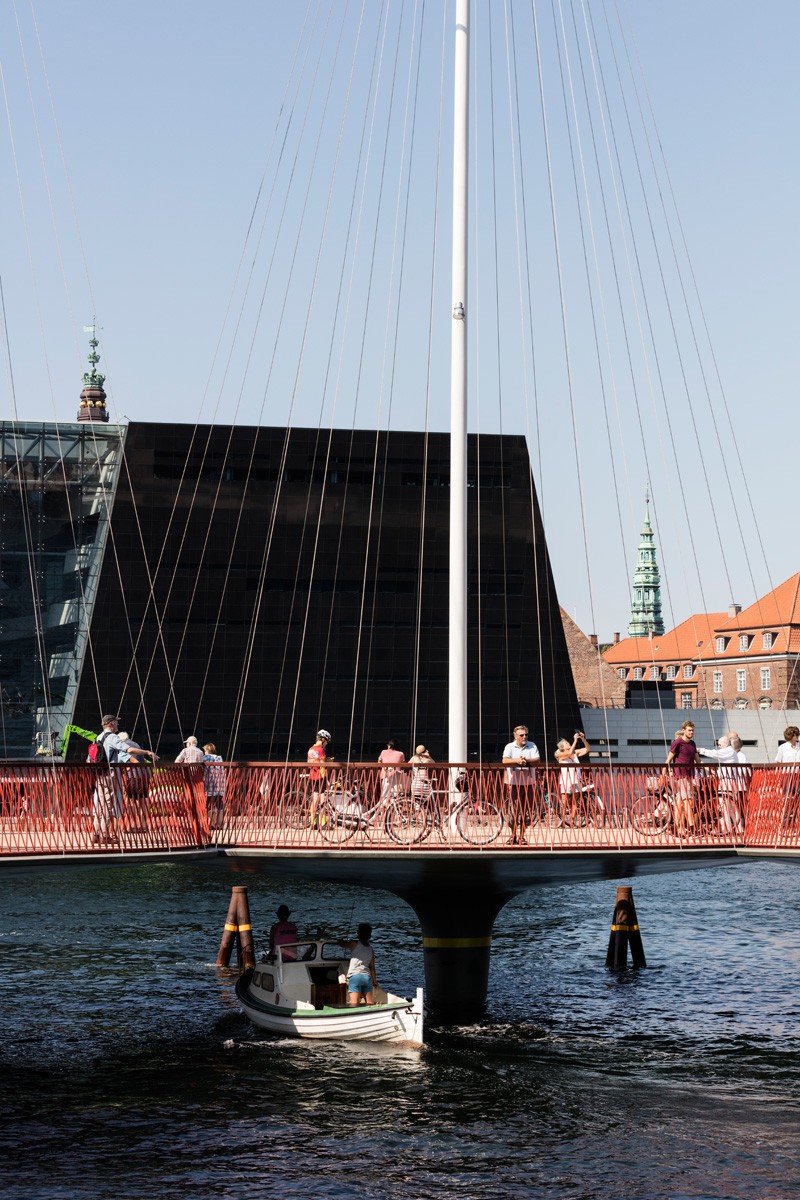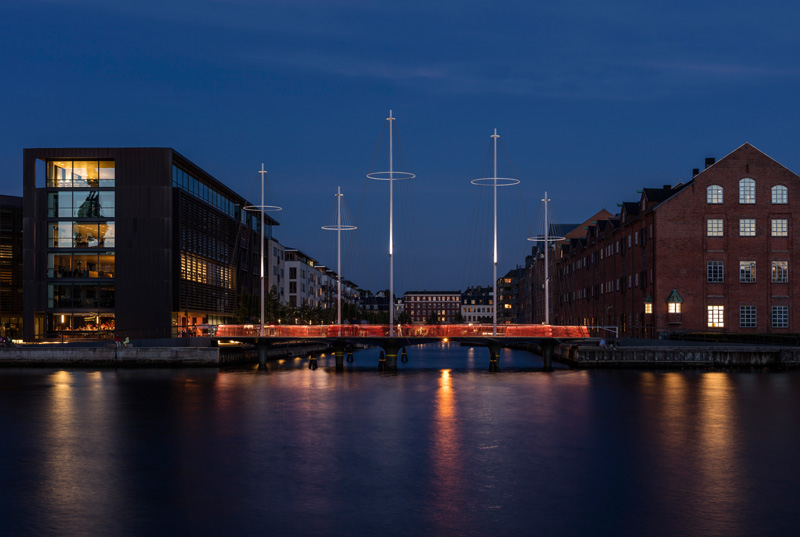Designed by Studio Olafur Eliasson, and built by the non-profit charitable foundation Nordea-fonden, Cirkelbroen bridge is a gift to the city of Copenhagen to promote good living in Denmark.
The designer’s description
Cirkelbroen celebrates pedestrians. It reflects the daily life and intimacy that you find around the canal in the Christianshavn neighbourhood, its houseboats and sailing boats, the unique life on the ramparts. Copenhagen’s harbour was once a centre of maritime activity, and Cirkelbroen is a testimony to that history.
While working on the bridge, I remembered the fishing boats I saw as a child in Iceland. In the harbour, the boats were often moored right next to each other, and it sometimes seemed that you could even cross the harbour just by walking from boat to boat.
The bridge is made of five circular platforms, and it contributes to a larger circle that will form a pedestrian route around Copenhagen Harbour, where people – cycling, running, walking – can see the city from a very different perspective. As many as 5,000 people will cross this bridge each day.
I hope that these people will use Cirkelbroen as a meeting place, and that the zigzag design of the bridge will make them reduce their speed and take a break. To hesitate on our way is to engage in bodily thought. I see such introspection as an essential part of a vibrant city. In Copenhagen, progress has been made in thinking about what constitutes quality in urban space and about the atmosphere of a space.
Obviously, one cannot plan atmosphere, as it is co-produced by the people who use the space, but it is possible to nurture an atmosphere, to allow it to grow. As an artist, I work with abstract and emotional qualities, so this is where, I believe, art can play a role.
I’m convinced that politicians, urban planners, and developers need to expand their toolbox by bringing in what I would call creative reality producers – artists, social scientists, sociologists, anthropologists, historians, dancers, poets, environmental activists, and philosophers – to rethink urban spaces.
In Denmark, there is a strong tradition of focusing on inclusion, on accepting the other – welcoming ideas that we have not yet had, people we have not yet met, and unpredictable encounters. It’s something we all have to work on together, and one way of addressing this is in how we plan public space.
Cirkelbroen, I hope, will contribute to improving the quality of life and the development of a hospitable and inclusive city.
